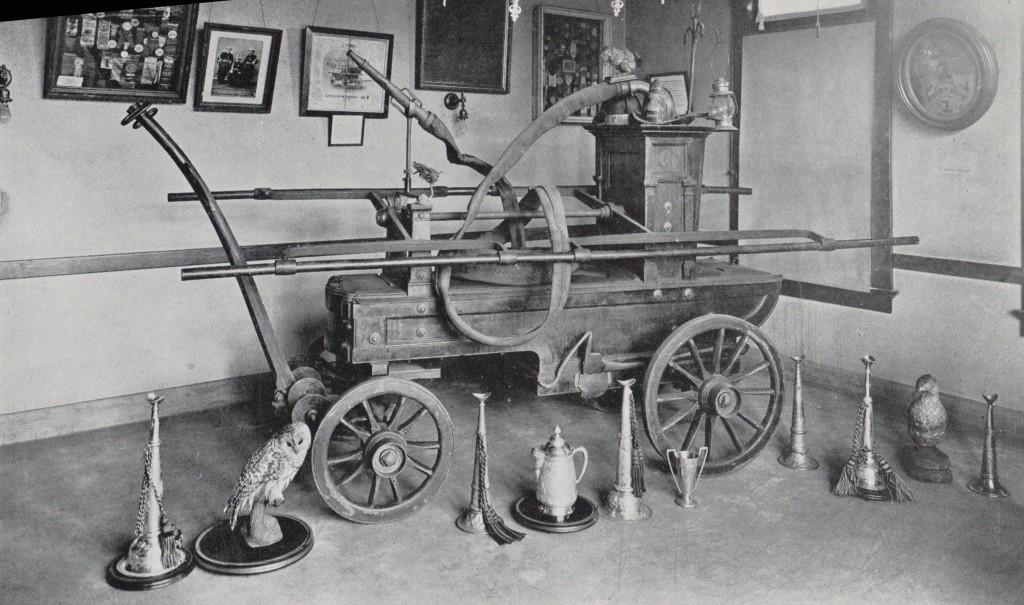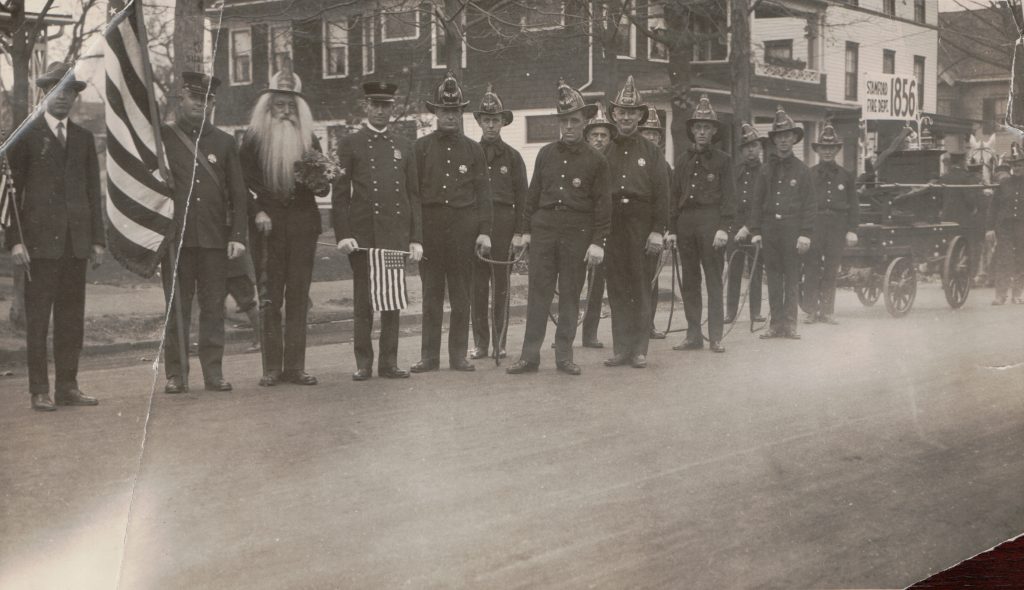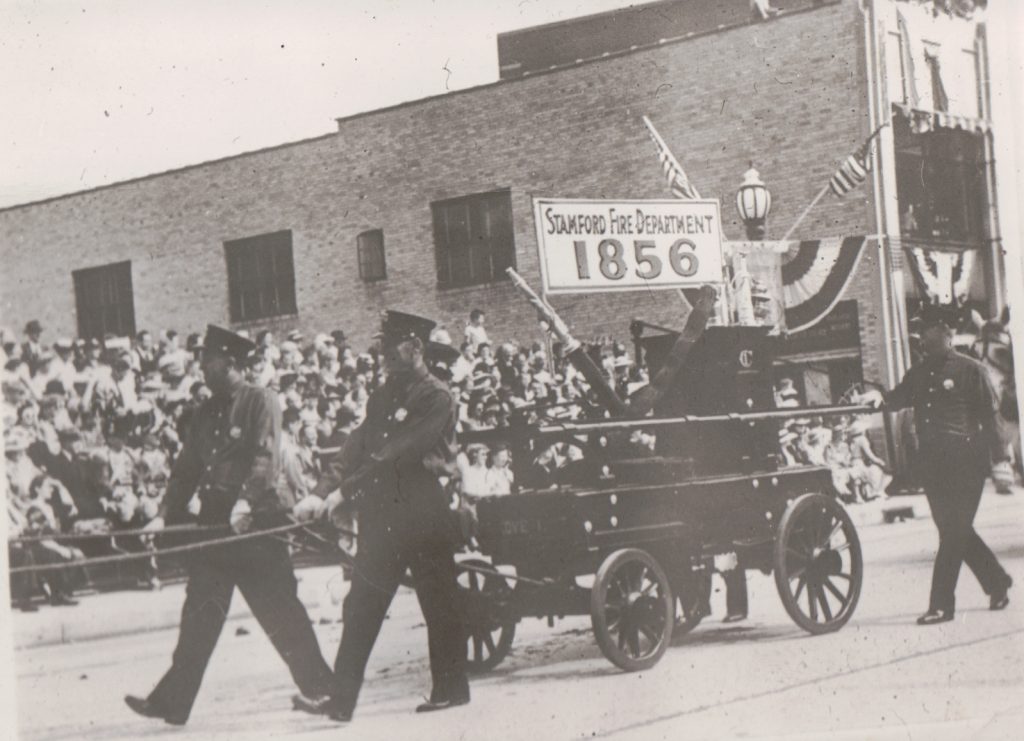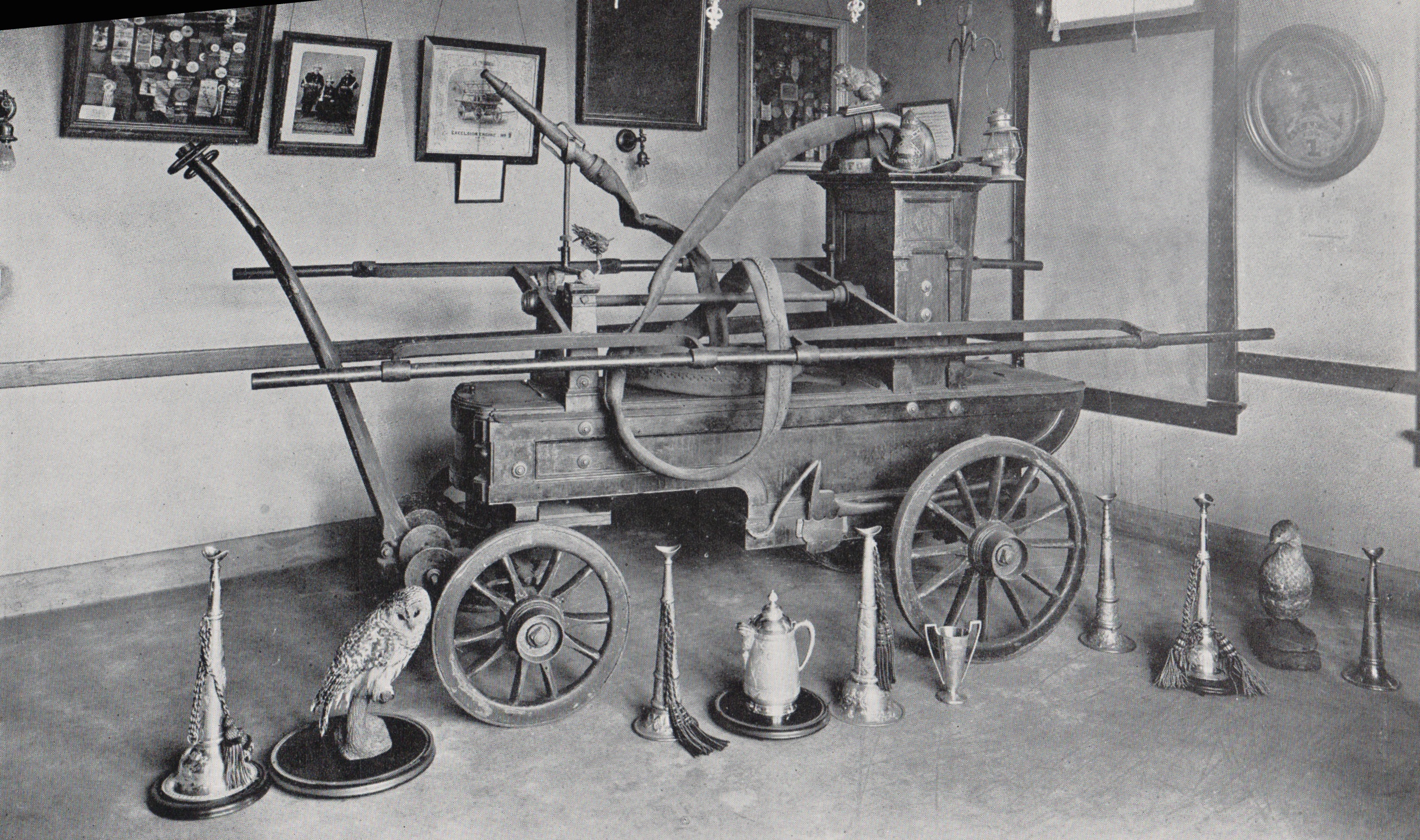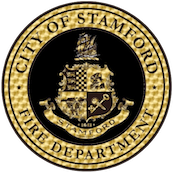Share This Story, Choose Your Platform!
Stamford first pumping apparatus was known as the “Rippowam”. Pictured above, the “Rippowam” survived the early 1900’s and was on display in the “Relic” room on the third floor on the new Central Fire Station which was built in 1915. The Rippowam was also prominently displayed in various parades over the years including the 1937 State Fireman Association Convention held in Stamford (pictured below). Heartbreakingly, according to a note on a photograph at the Stamford Historical Society, the “Rippowam” was broken up for scrap in 1938. But that date may not be entirely accurate as the “Rippowam” was seen and photographed in the 1941 Stamford Tercentenary Celebration (pictured below the advocate article).
Below is a transcribed article, originally published in the Stamford Advocate in 1966 that provides a great history of the apparatus.
Firefighting Spurred Competition
By Marie Updegraff
The Stamford Avocate
November 6, 1966Although Stamford undoubtedly had bucket brigades long before 1844, the first known piece of firefighting equipment of any consequence was not purchased until August 11 that year.
It was a gooseneck engine named “Rippowam” which cost a total of $618.20, including 197 feet of hose.
Volunteer fireman pulled the small, four-wheeled contraption along by a handle the way a child pulls a little red wagon. They not only hauled the engine to the fire, but literally manned the pump that sucked water out of the nearest well.
On either side of this primitive pumping wagon stretched a long bar attached by shorter bars extending to the piston of the pump. When the gang on one side pumped their bar down, the gang on the other side pulled their bar up. They generated a lot of manpower that way.
That December, the Rippowam Engine Company No. 1 was formed, and the next year in 1845, an engine house was built behind the Town Hall to shelter both “Rippowam” and the meetings of its company, originally chartered for a membership of 30.
Sands Seely was named company foreman, S K Satterlee, secretary, and C H Leeds, treasurer. The assistant foreman was James H Minor.
Another 30-member company known as Fire Engine Company No. 1 was chartered in 1854. It’s 5 1/2 inch engine was called “Stamford.” It occupied a new house built for the great some of $569 on Gay Street.
Some of the members of the second company were Andrew Perry, E Bishop, G K Riker, T J Daskam, George E Scofield, Jessie A Reed, J N Webb, Theodore Lockwood, William Lavender, Francis Dauchy, Theodore Hart, W W Smith, C E Peck and Theodore Davenport.
“Rippowam” and “Stamford” and their companies compete in firefighting tests. Sometimes they ran to the fire to see who could get there first. Sometimes, with an engine on either side of the Congregational Church on Atlantic Square, the rivals would try to lobe geysers over the church roof, which was probably the tallest of any building in Stamford. The winners had the satisfaction of spraying the faces of the losers on the other side.
In 1855, the Rippowam company bought a 10-inch Button engine and retired old Rippowam.” New “Rippowam” with Foreman Lorenzo Meeker, placed 14th among 22 engines competing in a muster at Springfield September 28th that year. It made a perpendicular play of 109 feet through 300 feet of hose.

